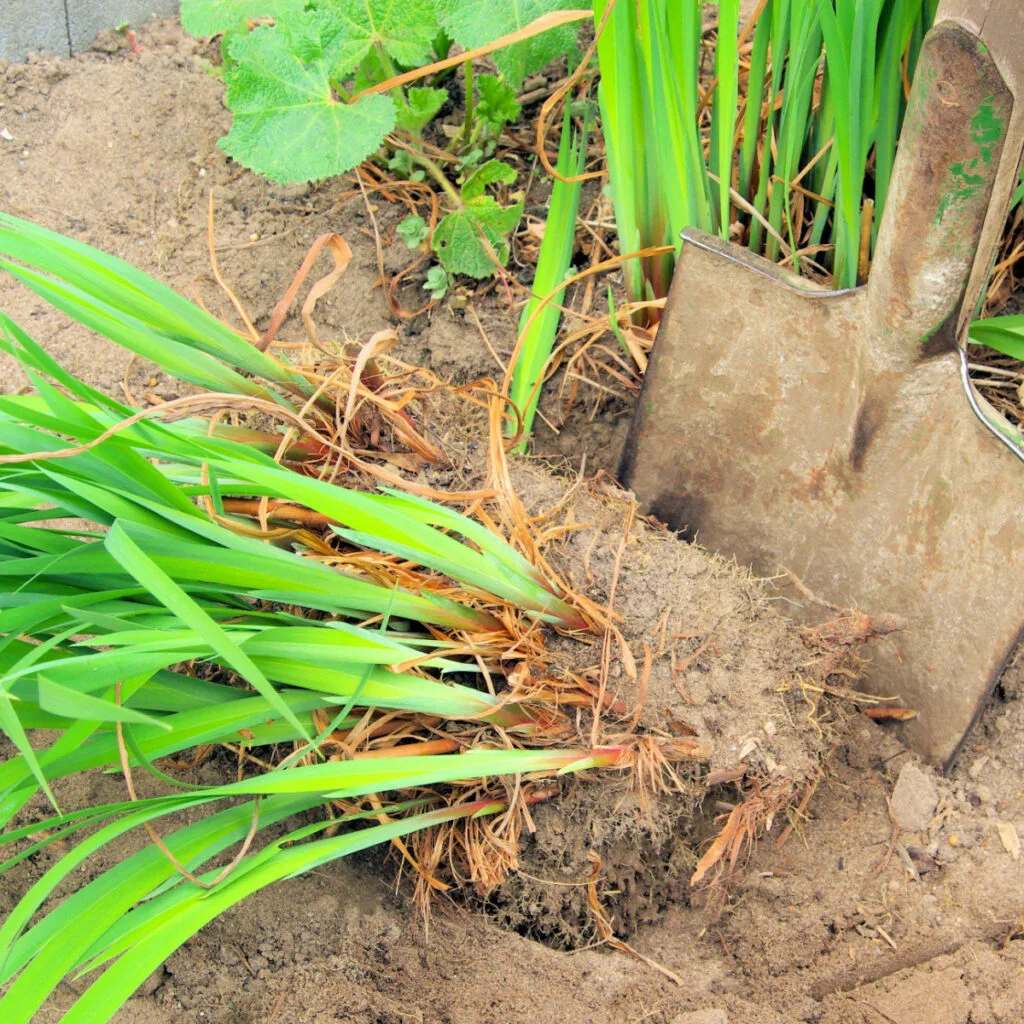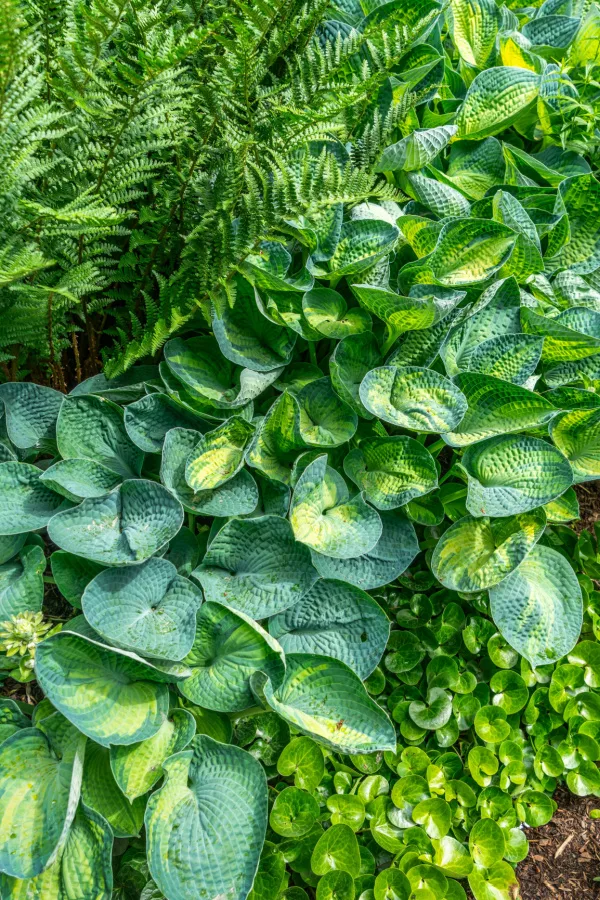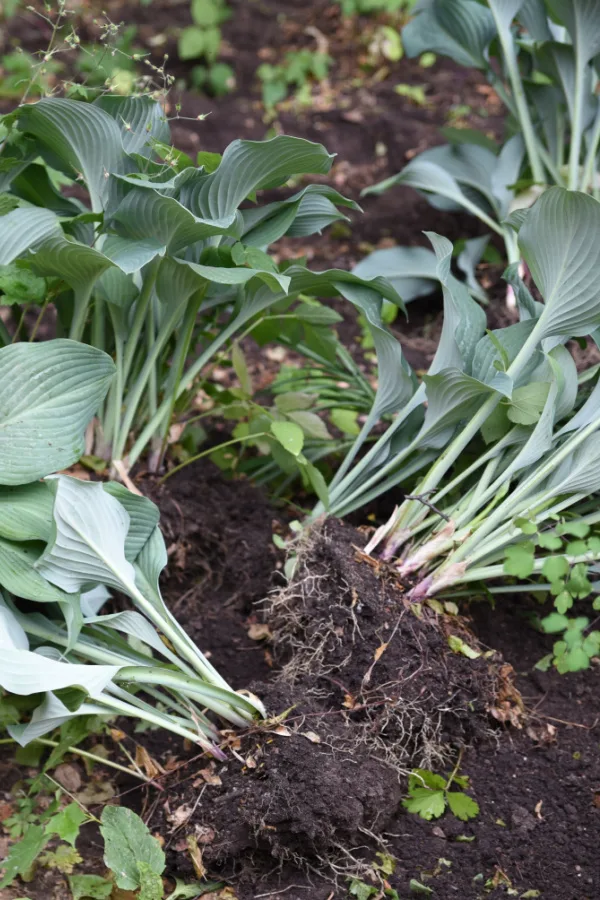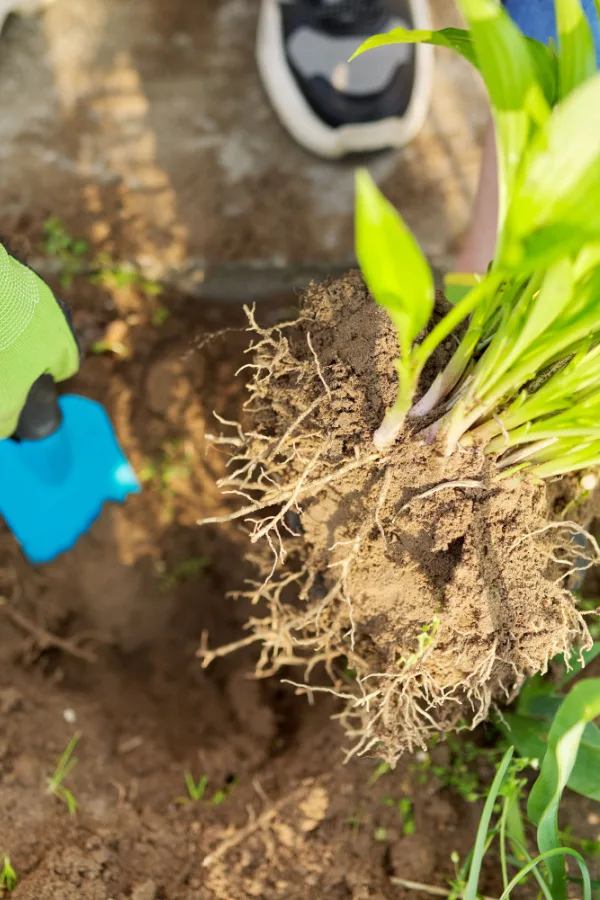Fall is the perfect time to divide and transplant the perennials growing in your flowerbeds – and can it ever help your plants and flowerbeds to new heights!
Not only does regular dividing help to keep plants healthy and flowering strong, but it also gives gardeners a whole slew of new plants to fill their flowerbeds with more color than ever. Even better, in addition to more color, the more you can fill flowerbeds with plants, the less chance there are for weeds to grow as well.
Regularly dividing also helps to keep your growing spaces more manageable. When perennials are left alone to multiply in the same location year after year, they can quickly become overcrowded. And when they do, it can spell trouble for your plants.

Perennials that grow too large often have their roots become overgrown and root bound. Unfortunately, when the roots become bound, they have trouble absorbing nutrients and moisture from the soil. When this happens, the plants will begin to struggle due to a lack of resources.
Overcrowding is often the number one reason perennials fail to bloom or bloom poorly. But by simply dividing your plants every few years, you are all but ensure healthy roots – and strong flowering. And, of course, plenty of free transplants in the process!
Why Fall Is The Best Time To Divide Perennials
Although you can divide most herbaceous (leafy) perennials at any point of the growing season, there are a lot of built in advantages to dividing in the fall.
Dividing and transplanting a perennial causes instant stress to the plant. And that stress and shock can take time to recover from. When plants are divided in late spring or during the summer months, the warmer temperatures and hot sun can make it more difficult for them to re-establish.
In most cases, spring or summer dividing simply means the plant will not recover enough to bloom during the same growing season. But in extremely hot or dry conditions, it can actually cause the transplants to die off completely.

But by dividing in the fall, the new transplants can recover more easily in the cooler autumn air. Not only does it help new divisions to re-establish their roots quickly, it also allows to then rest as they go dormant over the winter months. And when spring returns, the plants are more than ready to grow and flower!
How To Divide Perennials This Fall – The Simple Secrets To Success
The first key to successfully dividing perennials in the fall is to start with healthy, mature plants. Choose larger plants that have strong foliage and growth patterns. Typically, the larger the perennial is, the bigger and more roots you will have to work with.
Unfortunately, if you select plants that are small or weak, the new transplants often struggle to establish and survive. With these plants, there is just not enough root structure to absorb the nutrients they need for survival.
Digging Up Mature Perennials
It is important to make sure the soil is fairly dry before attempting to dig up perennials. Wet soil will compact around the roots, making it hard to dig up the plants.
The goal of digging up any type of plant is to remove as much of the root system as possible. The roots are what will help support and sustain the new transplants until they can produce new roots of their own.
Most of the root zone will be around the outer edge of where the foliage grows for each plant. Use a sharp shovel or spade to dig up a few inches past where the foliage ends. Go around the entire plant in a large circle to help loosen the soil.

Next, take your shovel deeper and lift to remove the entire base of the roots. Don’t be alarmed if you cut off some of the outer roots. Perennial plants are hardy and can withstand a bit of damage. For overly large perennials, you may even need to take the plant out in sections.
Dividing Perennials – How To Divide Perennials In The Fall
Now that the plant has been removed from the soil, it’s time to divide the root ball into new plants. It’s much easier to accomplish this when split the plant from the bottom where the roots are.
To do this, turn the plant upside down so that the root ball is facing up and the foliage is resting on the ground. Use a sharp shovel or knife to cut down through the roots of the plant. A Hori-Hori knife is a perfect tool for accomplishing this task with even the toughest perennial roots. (Affiliate Product Link: Hori Hori Knife)
How many divisions you make will depend on the size of the root ball as well as the size of the transplants you wish to create. The root ball size will decide the size of the plant next year, so keeping divisions similar will help keep the transplants growing evenly in your flowerbeds.
Transplanting New Divisions – How To Divide Perennials In The Fall
Once you have divided the perennials, you want to work quickly to prevent plants from drying out. If you don’t have the growing space quite prepared yet, bury the transplants in a holding bed or in containers. The key is to get them in the ground as soon as possible so the plants can begin to re-establish.
To transplant new divisions, create a hole that is two to three times as wide as the root ball. The planting hole should also be a few inches deeper as well. This will give the roots plenty of space to grow and expand quickly.

Before planting, amend your planting hole with a few inches of compost in the bottom of the hole. This has a couple of huge benefits for the new transplants.
Why Compost Is A Must…
For starters, the loose nature of compost allows roots to expand and re-establish with little trouble. Unfortunately, when transplanted into regular bed soil, the tender roots often struggle to push out. Compost also gives the plant a boost of easy-to-absorb nutrients to help it grow quickly.
Finish by back-filling around the transplant with an equal combination of soil and compost. Again, this will make it easy for the plants to grow new roots. Lightly tamp the soil down around the surface and add a few inches of mulch to help insulate the new roots under the soil.
Mulching all of your flowerbeds in the fall is actually extremely beneficial. Not only will it help protect your plants through winter, it also can nearly eliminate next year’s weeds and weeding chores. See: How To Mulch Fall Flowerbeds – Stop Next Year’s Weeds Now, For Good!
After Planting Care – How To Divide Perennials In The Fall
Don’t be surprised if most of the old foliage dies back or even falls off after transplanting. It doesn’t mean that your plants are dying. The perennials will keep pushing out new roots during the fall while starting to become dormant above the ground.

A key to getting the divisions off to a great start in the fall is keeping them properly watered. Water plants well at the time of planting and continue to water them until the ground freezes.
You should start to see new growth by the time late fall sets in. When spring arrives, your new divisions will be strong, healthy, and ready to fill your growing spaces with beautiful color and foliage – all for free!
Follow Our Facebook Page For Even More Great Tips! Simple Garden Life Facebook Page
Simple Garden Life is a website dedicated to keeping gardening fun, simple and enjoyable! We publish two new articles each week along with a new garden podcast episode every two weeks. This article may contain affiliate links.
